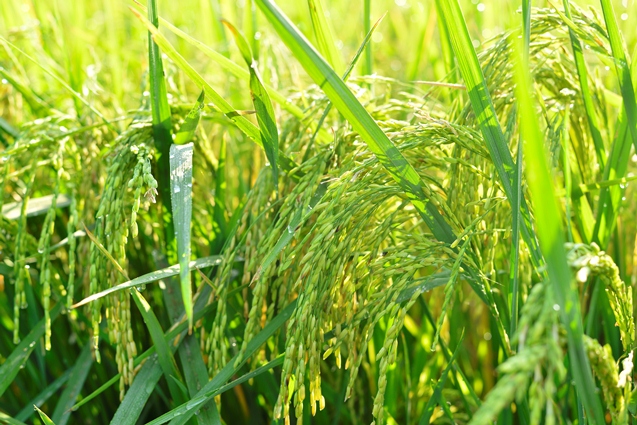 Artificial pollination provides possible solution for efficient and synchronized pollination of male and female flowers of Mestiso 19 (M19), according to PhilRice Study.
Artificial pollination provides possible solution for efficient and synchronized pollination of male and female flowers of Mestiso 19 (M19), according to PhilRice Study.
In the research titled Pollen banking for synchronized pollination: Strategy to increase seed yield of Mestiso 19, artificial pollination was conducted by storing sufficient amounts of viable pollen from the male parent in a container and loading it into the stigma of the female parent.
M19 is an F1 hybrid rice obtained by crossing the PRUPTG101 (female parent) and PRUPTG101M (male parent). M19 has an average yield of 6.7 t/ha and maximum yield of 10.7 t/ha.
Alpha Grace S. Ferriol, science research specialist of PhilRice’s Seed Technology Division, said that the study aimed to address low seed yield owing to insufficient pollen and unsynchronized opening time of the parents’ flowers during hybridization.
“Pollen is the male gametophyte of the flowering rice plant and it has an important role in F1 seed production. With adequate pollen available, additional pollen can be artificially loaded into stigmas to increase pollination and yield,” Ferriol explained.
The study was conducted under irrigated condition at PhilRice Central Experiment Station during the dry and wet seasons of 2016.
Researchers collected pollens from a mature tiller during the rice plant’s active flowering stage. The collected pollens were then stored in three different containers (amber glass, paper, and ziplock plastics), with three storage durations (24, 48, and 72 hours), and under three temperatures (28, 5, and -5oC). The collected pollens were also put into different culture media to measure their viability and germination percentage.
Results showed that high percentage of pollen viability was observed from the collection during anthesis regardless of the culture medium used. It was recorded that the highest viability of pollen grains (50% viability) is only achieved after 24 hours of storage. It was also observed that among the three storage materials, amber glass was the best in preserving pollen grains’ shelf life.
“Findings in this basic research on pollen banking can be used as guide by researchers who wish to improve and enhance pollen parents of promising hybrids and on researches in increasing M19’s yield,” Ferriol said.
The study was authored by Ferriol, Richie Eve Ragas, Jennifer Manangkil, and Susan Brena. It won 3rd place in the poster competition (crop physiology and crop production management category) during the 24th Federation of Crop Science Societies of the Philippines Scientific Conference held in Iloilo City, June 13-16.




